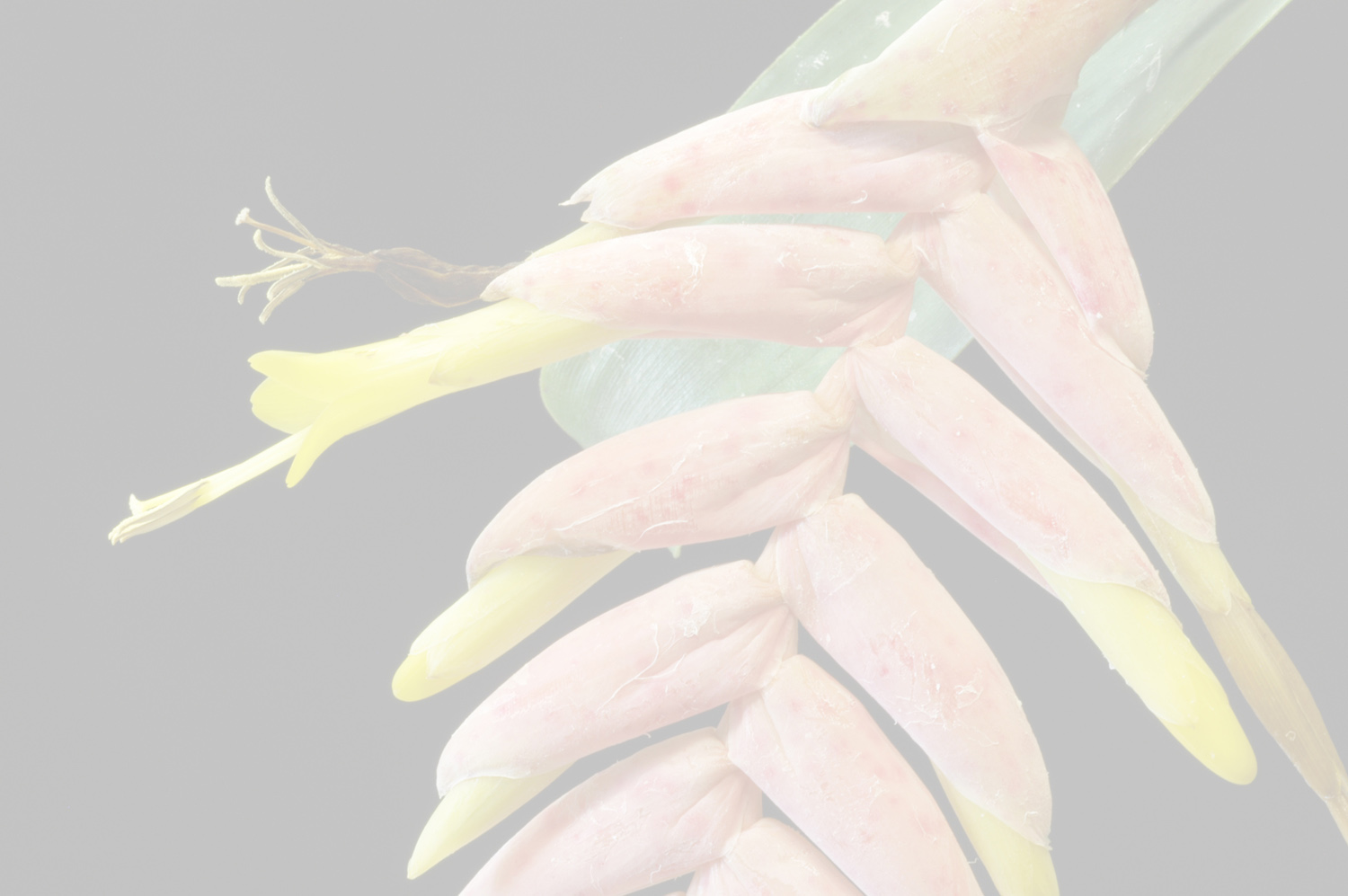

 Vriesea rosulatula E.M.C.Leme[as Vriesea rosulatula E.M.C. Leme]
Vriesea rosulatula E.M.C.Leme[as Vriesea rosulatula E.M.C. Leme]Diagnose: —A Vriesea amadoi Leme, affinis, foliis plus numerosis, laminis foliorum angustioribus, dense albozonato-lepidotis, inflorescentia pauciflora, floribus longioribus laxe dispositis, petalis longioribus, stigmatis laminis crenulato-papillosis differt. Observations: —Vriesea rosulatula is closely related to V. amadoi, differing by the more numerous leaves per rosette (26 to 28 vs. 12 to 15 in number), narrower leaf blades (2-2.3 cm vs. 3.5- 4.5 cm wide), which are densely lepidote with trichomes arranged in crossbands (vs. glabrous to subdensely and inconspicuously lepidote), inflorescence with few flowers (8- to 10-flowered vs. 18- to 25-flowered), which are longer (ca. 37 mm vs. 25-30 mm long) and laxly arranged (vs. densely arranged), besides longer petals (32-33 mm vs. 21- 24 mm long), and the stigma with crenulate-papillose blades (vs. long laciniate and not papillose).
The general appearance of V. rosulatula also reminds a member of V. limae complex of species, which is composed by V. limae L.B. Sm. itself, and by V. freicanecana J.A. Siqueira & Leme, V. lancifolia (Baker) L.B. Sm., V. oligantha (Baker) Mez, V. vellozicola Leme & J.A. Siqueira, and V. zonata Leme & J.A. Siqueira (Leme & Siqueira Filho, 2006) . However, all those species have typical convolute-blade stigma type, not tubolaciniate as in V. rosulatula, and usually lives on flat to slightly inclined rock outcrops, except for V. zonata (on inselberg vertical rock walls), V. oligantha (sometimes epiphytic on Vellozia spp.) and V. vellozicola (exclusively epiphytic on Vellozia spp.). On the contrary, all species with tubolaciniate stigma type lives exclusively on vertical or nearly so rock walls.Edited from (02-01-2015): Leme 2012a. (protologue) Revision of the Lithophytic Vriesea Species from Minas Gerais (and vicinities), Brazil - Part V: Two tubolaciniate stigma-type new species .